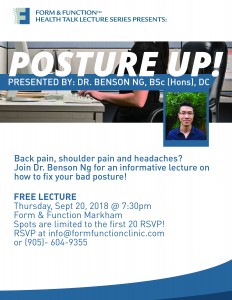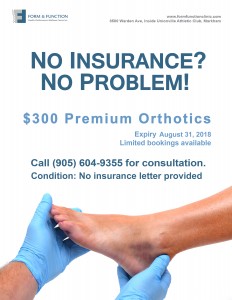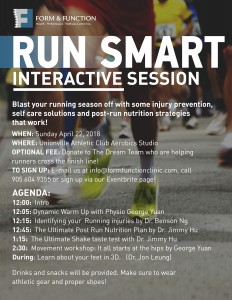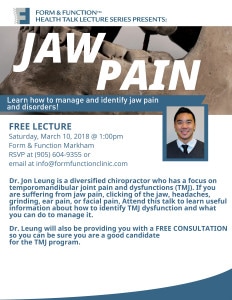Lacing Technique – Heel Lock
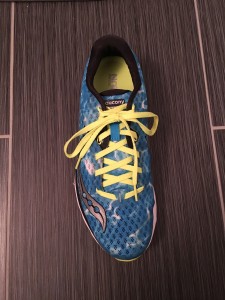
Do you find your heels slipping out of your shoes when you’re walking or running? Using a different lacing technique can help solve this problem.
- Tie your laces in a normal criss-cross pattern up until the second to last hole
- Keeping your lace on the same side, weave it into the last hole leaving a loose loop
- Take the end of the lace and weave it into the opposite side’s loop
- Pull the laces tightly and tie a knot like normal
Sit with a lumbar lordosis!
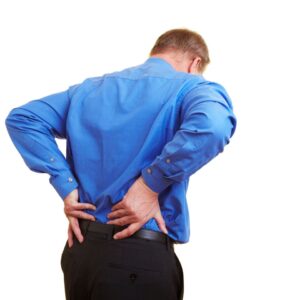
Did I say lumbar lordosis again? Forgive me, but this is just as important in sitting as it is when lifting. The correlation between individuals who sit more than four hours per day and lower back pain has been proven. And one of the reasons is that these individuals are likely to slouch for the better part of the day. Those of us with healthy backs can tolerate a slouched posture for 30 or 40 minutes at a time, but not much longer.
Actively sitting with a lordosis means that your own muscles are doing the work. I cue my patients with my hand at the lower back, pushing them gently forward and up, and at the same time say “get your shoulders tall”. I then have them maintain this posture for several minutes. At the beginning, this can be quite tiring. This is why I often tell the patient who sits most of the day to acquire a “lumbar roll”. This product is basically a cylinder of spongy material with cloth enclosing it, and a strap that holds it to your chair. When not able to sit actively with a lordosis, one should rely on it.
Free Gym

Many people are unable to find a consistent time to go to the gym or get the physical activity they need. This is not an excuse to not get any physical activity as there various ways to be physically active as we have access to “Free Gyms” on a daily occurrence. Instead of using an escalator or an elevator and use the stairs (also known as a “Free Gym”). Next time you buy groceries park farther away and carry a couple of the bags (the walk is a “Free Gym” and the groceries are “Free Weights”). If your dog is barking at you to go to the bathroom do not just open the back door and let him out, take him for a walk as he is really asking you to be his gym partner. There are dozens of daily choices we can make every day to make our lives a little more active and help fill in the times when life gets in our way of our regular exercise.
Avoid Losing Toenails!
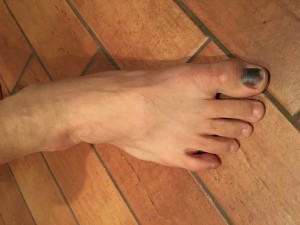
As most long distance runners know, it is not uncommon to lose a toenail…or two. It is caused by bruising that develops as a result of the repetitive impact between the toenail and the shoe and/or ground. As the nail grows, it lifts off from the nailbed underneath and can eventually fall off. So how can you avoid this from happening at all?
- Make sure you keep your toenails short. The longer the nail, the more likely it is to hit the ground or your shoe causing the bruising.
- Buy running shoes a half size larger than your usual size. This leaves a bit of extra room between the foot and the shoe, lessening the chance of impact.
- Check the shape of your shoes. Avoid shoes with a tapered or narrow toe-box, and look for shoes that have a square shaped toe-box.
Exercise Recommendations
It is important to incorporate physical activity in our daily lives. The American College of Sports Medicine has released new recommendations on the quantity and quality of exercises categorized by cardiorespiratory, resistance, flexibility, and neuromotor exercises.
The recommendations are as follows:
- Cardiorespiratory exercises: Adults should get at least 150 minutes of moderate-intensity exercise per week.
- Resistance exercises: Adults should train each major muscle group two or three days each week using a variety of exercises and equipment.
- Flexibility exercises: Adults should do flexibility exercises at least two or three days each week to improve range of motion.
- Neuromotor exercises: Neuromotor exercise (sometimes called “functional fitness training”) involving balance, agility, and coordination is recommended for two or three days per week.

